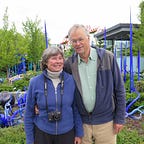The Secret Wonder of Paris
The Old Bridge at the Heart of New Plans to Create the World’s Best Waterfront
Putting Paris on the Map. The invention of Paris as the world’s favorite city began with a bridge. It opened in 1607.
Great Gathering Spot. Before the Eiffel Tower became the City of Light’s most famous icon, the Pont Neuf (New Bridge) was its long-reigning symbol. The modern industry of tourist souvenirs began with people bringing home trinkets painted with the image of this crossing over the Seine. According to Joan DeJean in the book How Paris Became Paris, tourism as we know it grew out of the crowds of people journeying to see this famous bridge.
Pont Neuf shaped the development of modern Paris by integrating the new Right Bank into the long-established Left Bank. Until then a trip across the Seine — if you could not afford a boat ride — required crossing two separate bridges with a long walk between them.
Wider than any Parisian street at the time it was built, Pont Neuf quickly became visitors’ and local resident’s favorite hang-out. Before the Internet or home delivery of newspapers, it’s where people went to learn what’s going on in the world. Indeed, the first sidewalk in Western Europe debuted here, giving rise to a new word pieton (pedestrian).
Bridge with a View. Pont Neuf is one of the most social of Paris’s many bridges, primarily because of multiple places to pause, enjoy the view or just pass time. The bridge was designed with numerous alcoves that jut out above the river, which provide places for people to sit, for street entertainers to perform, and for artists to create.
The activations along the Seine such as the Paris Plage and Les Berge, which feature urban beaches in the summer, places to dance and places to just hang out or take long strolls show that Paris has come a long way in just a few short years toward making its extended riverfront corridor the ultimate social connector.
As Paris Mayor Anne Hidalgo—who is making the city a model for social and environmental innovation—wrote in a recent Time magazine special issue on climate:
“There are more and more of us fighting for a different vision of the world — a world that takes care of our most precious resources: the air we breathe, the water we drink and the places we share.”
The gradual transformation of the Seine throughout the city is positioning Paris as one of the great waterfronts of the world. Twenty years ago, it seemed an impossible dream. Now it is remaking Paris with a strong spine running through the middle. Let’s watch and see what happens. We will fill you in with future articles about what has happened over the last few years, and some thoughts on the future.
Paris Waterfront Renaissance. Through our 50 years of studying and working in cities on every continent, Paris has always stood out as one that puts humans first. And it might well be the most human-centered city on Earth.
What Comes Next? We will do a special series on Paris as part of our larger global exploration of great public spaces.
The Social Life Project highlights the most successful examples of community empowerment happening around the planet, sharing insights from folks who make things happen.
